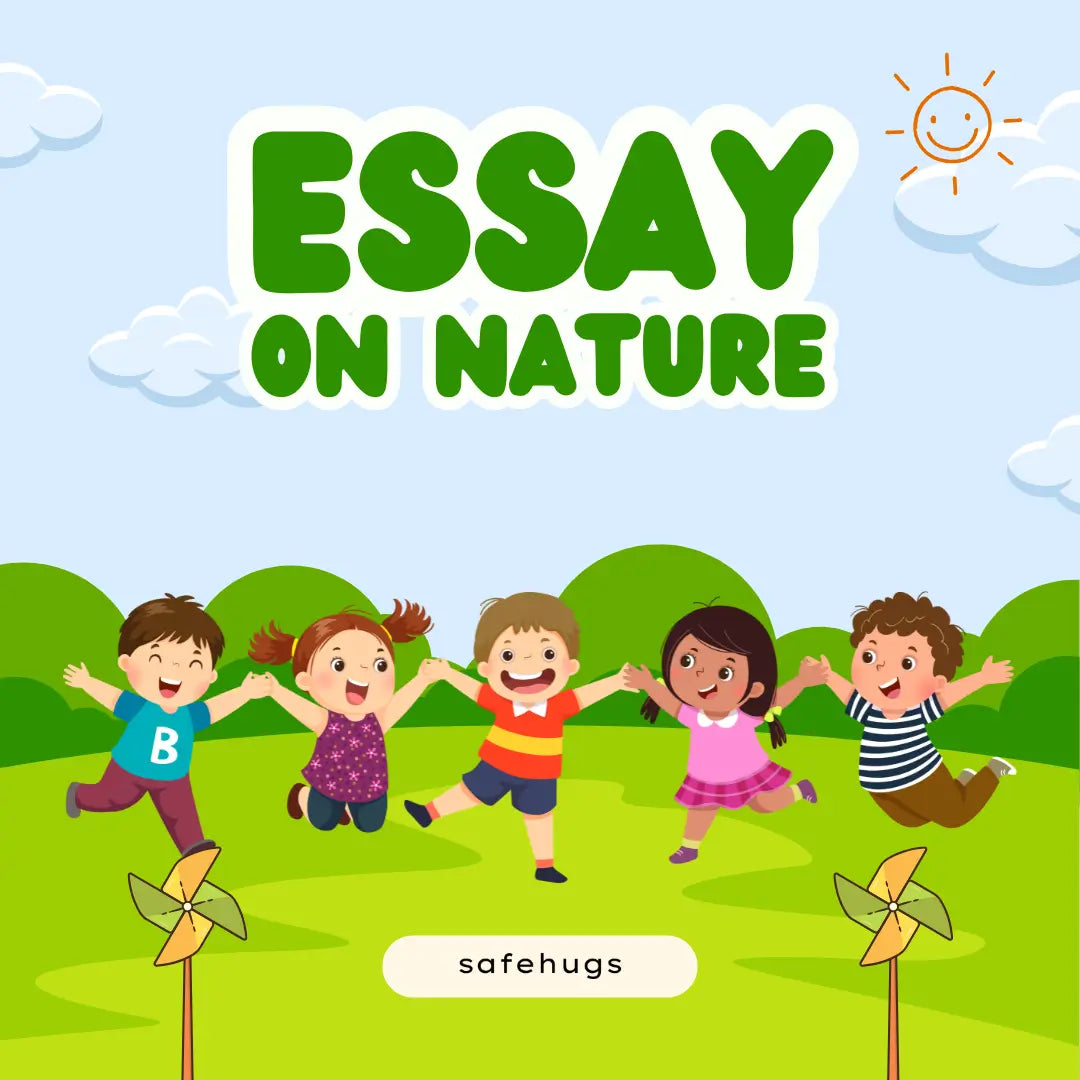Essay on Dussehra in English for Students & Children
Table of Contents
Dussehra, also called Vijayadashami, is one of the most important festivals in India. It is celebrated every year to remember the victory of good over evil. On this day, Lord Rama won the battle against the demon king Ravana. In many parts of India, people also celebrate the victory of Goddess Durga over the demon Mahishasura.
This festival comes at the end of the nine-day Navratri celebration. People pray to God, wear new clothes, and enjoy fairs and stage plays of the Ramayana called Ramlila. The burning of large figures of Ravana, Meghnath, and Kumbhkaran is the highlight of the day. Dussehra teaches us that truth and goodness always win, no matter how strong evil may seem.
History & Importance of Dussehra
The history of Dussehra is linked to two famous stories from Indian tradition. The first story comes from the Ramayana. It tells how Lord Rama fought a long battle to rescue his wife Sita from the demon king Ravana. On the tenth day, Rama finally defeated Ravana. This day is celebrated as Dussehra to remember the victory of good over evil.
The second story is about Goddess Durga. Long ago, the demon Mahishasura troubled the world. After nine days of fierce fighting, Goddess Durga killed him on the tenth day. This is also why Dussehra is called Vijayadashami, which means "the day of victory."
The importance of Dussehra is very special. It teaches us that truth, courage, and goodness are stronger than lies and cruelty. The festival reminds everyone to be honest, kind, and brave in daily life. It is a time to celebrate family, faith, and the hope that good will always win in the end.

Essay on Dussehra for Class 1 & 2
Dussehra is a happy festival celebrated all over India. It comes after the nine days of Navratri. On this day we remember that good always wins over evil. People tell the story of Lord Rama, who defeated the demon king Ravana to save his wife Sita. In some places, people also remember how Goddess Durga killed the demon Mahishasura.
On Dussehra, families visit fairs and watch plays called Ramlila. At night, big statues of Ravana are burned with firecrackers. Everyone wears new clothes and enjoys sweets. This festival teaches us to be brave, kind, and truthful. Dussehra shows that honesty and goodness will always win in the end.
Essay on Dussehra for Class 3
Dussehra, also known as Vijayadashami, is a famous festival of India. It is celebrated at the end of the nine days of Navratri. This festival tells us that good is always stronger than evil.
The story of Dussehra comes from two important legends. One is from the Ramayana, where Lord Rama defeats the demon king Ravana to save his wife Sita. The other is about Goddess Durga, who kills the demon Mahishasura after a long battle.
People celebrate Dussehra with great joy. They watch plays called Ramlila that show the life of Lord Rama. In many places, huge figures of Ravana, Meghnath, and Kumbhkaran are burned with fireworks. Families wear new clothes, offer prayers, and enjoy sweets together.
Dussehra teaches us to be honest, brave, and kind. It reminds everyone that truth and goodness will always win, no matter how powerful evil may seem.
Essay on Dussehra for Class 4
Dussehra, also called Vijayadashami, is an important festival celebrated all over India. It comes after the nine days of Navratri and marks the victory of good over evil. People of every state celebrate it with happiness and devotion.
The festival is connected with two famous stories. The first is from the Ramayana, where Lord Rama defeats the demon king Ravana to rescue his wife Sita. The second is from the story of Goddess Durga, who killed the demon Mahishasura after nine days of battle. Both stories teach us that truth and courage always win.
On this day, people visit temples, wear new clothes, and gather to watch the Ramlila, a play based on the life of Lord Rama. In the evening, large statues of Ravana, Meghnath, and Kumbhkaran are filled with firecrackers and set on fire. The bright fireworks and cheering crowds make the celebration exciting for everyone.
Dussehra reminds us to follow the path of honesty and kindness. It inspires children and adults to be brave and to believe that goodness will always be stronger than evil.

Essay on Dussehra for Class 5
Dussehra, also known as Vijayadashami, is one of the most celebrated festivals in India. It comes at the end of the nine-day Navratri festival and brings joy and excitement to people of all ages. The main lesson of Dussehra is that good always wins over evil, no matter how powerful the wrong side may appear.
This festival is linked to two well-known stories. The first is from the Ramayana, where Lord Rama defeats the demon king Ravana to save his wife Sita. The second is about Goddess Durga, who fought the demon Mahishasura for nine days and finally won on the tenth day. Both stories teach us the importance of truth, courage, and righteousness.
People celebrate Dussehra in different ways across India. In many places, colourful fairs and Ramlila plays are held to show the life of Lord Rama. Large statues of Ravana, Meghnath, and Kumbhkaran are filled with firecrackers and set on fire in the evening. The loud fireworks and bright lights fill the sky with excitement.
Dussehra is more than just a festival of fun. It reminds everyone to be honest, kind, and brave in daily life. It encourages us to fight against wrong actions and to always choose the path of goodness and truth.
Essay on Dussehra for Class 6
Dussehra, also called Vijayadashami, is a major festival celebrated with great joy across India. It marks the victory of good over evil and falls on the tenth day after the nine-day festival of Navratri. People of all ages look forward to this special occasion because it carries a deep moral lesson and colourful celebrations.
The history of Dussehra is connected to two famous legends. The first is from the Ramayana, where Lord Rama defeats the demon king Ravana to rescue his wife Sita. The second is from the story of Goddess Durga, who battled the powerful demon Mahishasura for nine days and finally killed him on the tenth day. Both stories show that truth, courage, and righteousness always win, even when evil seems strong.
Different parts of India celebrate Dussehra in their own ways. In the north, people perform Ramlila, a drama based on the life of Lord Rama, and burn huge effigies of Ravana, Meghnath, and Kumbhkaran filled with fireworks. In the south, cities like Mysore hold grand processions with music and decorated elephants. In the east, Dussehra marks the last day of Durga Puja, while in the west, people enjoy Garba and Dandiya dances.
Dussehra is not just a day of fun and fairs. It reminds everyone to follow the path of honesty, kindness, and bravery. The festival teaches us that no matter how difficult life becomes, truth and goodness will always be stronger than lies and wrongdoing.
Essay on Dussehra (100 Words)
Dussehra, also known as Vijayadashami, is a joyful festival celebrated across India to mark the victory of good over evil. It comes after the nine days of Navratri. According to the Ramayana, Lord Rama defeated the demon king Ravana on this day to save his wife Sita. Another story tells how Goddess Durga killed the demon Mahishasura after a long battle.
People celebrate Dussehra by visiting temples, wearing new clothes, and enjoying fairs. In many places, large effigies of Ravana, Meghnath, and Kumbhkaran are burned with fireworks. The festival teaches us to be truthful and brave and reminds us that goodness always wins.
Dussehra Essay in English (150 Words)
Dussehra, also called Vijayadashami, is an important Indian festival that celebrates the victory of good over evil. It is observed on the tenth day after the nine-day festival of Navratri. People of all ages celebrate it with devotion and joy.
The festival is linked to two famous legends. The first is from the Ramayana, where Lord Rama defeated the demon king Ravana to rescue his wife Sita. The second story tells how Goddess Durga fought the demon Mahishasura for nine days and won on the tenth day. Both stories teach us that truth and righteousness always win in the end.
On Dussehra, people visit temples, watch Ramlila plays, and enjoy colourful fairs. In many cities, huge effigies of Ravana, Meghnath, and Kumbhkaran are filled with firecrackers and set on fire, showing the end of evil. Dussehra reminds everyone to follow the path of honesty, kindness, and courage in daily life.

Essay on Dussehra Festival (200 Words)
Dussehra, also known as Vijayadashami, is a major Hindu festival celebrated across India to honour the victory of good over evil. It falls on the tenth day of the bright half of the Hindu month of Ashwin, right after the nine-day festival of Navratri. People look forward to this festival because it carries a strong message of truth and courage.
Two important legends are connected with Dussehra. The first is from the Ramayana, where Lord Rama defeated the demon king Ravana to rescue his wife Sita. The second is from the story of Goddess Durga, who battled the demon Mahishasura for nine days and finally killed him on the tenth day. These stories teach that honesty, bravery, and righteousness always win, even when evil seems powerful.
Celebrations differ across India. In the north, people watch Ramlila plays and burn giant effigies of Ravana, Meghnath, and Kumbhkaran filled with fireworks. In the south, grand processions and music mark the occasion, while in the east it coincides with the final day of Durga Puja.
Families wear new clothes, visit temples, and enjoy sweets and fairs. Dussehra is more than a festival of joy; it is a reminder that we should always follow the path of truth and goodness in our daily lives.
Essay on Dussehra (300 Words)
Dussehra, also called Vijayadashami, is one of the most important festivals celebrated in India. It falls on the tenth day after the nine-day Navratri festival, usually in the month of September or October. The festival spreads the message that goodness and truth will always win over evil and lies. People of all ages celebrate it with devotion, joy, and colourful traditions.
The history of Dussehra is linked to two great legends. The first is from the Ramayana, where Lord Rama fought a fierce battle against the demon king Ravana to rescue his wife Sita. On the tenth day, Rama killed Ravana and brought Sita back, showing that courage and righteousness are stronger than cruelty. The second legend tells how Goddess Durga fought the demon Mahishasura for nine days and finally killed him on the tenth day. Because of these stories, Dussehra is also called Vijayadashami, which means "the day of victory."
Dussehra celebrations vary across India. In the north, people perform Ramlila, a play that shows scenes from the Ramayana. In the evening, huge effigies of Ravana, Meghnath, and Kumbhkaran are filled with firecrackers and set on fire, symbolising the end of evil. In the south, especially in Mysore, grand processions with music and decorated elephants fill the streets. In the east, the festival marks the final day of Durga Puja, while in the west, people enjoy Garba and Dandiya dances.
Families wear new clothes, visit temples, and share sweets with friends and neighbours. Children love to watch the fireworks and the colourful fairs. Dussehra is not just a day of celebration; it is a reminder for everyone to be honest, kind, and brave. It teaches us that even when wrong seems powerful, truth and goodness will always win in the end.

Essay on Dussehra in English (500 Words)
Dussehra, also known as Vijayadashami, is one of the most celebrated festivals in India. It usually falls in the month of September or October, on the tenth day of the bright half of the Hindu month of Ashwin. The festival comes right after the nine nights of Navratri and carries a powerful message that truth and goodness will always triumph over lies and evil. People of all ages and communities take part in the celebrations, making it a festival of unity and joy.
The history of Dussehra is linked to two great legends of Indian tradition. The first comes from the Ramayana, the epic story of Lord Rama. According to the legend, the demon king Ravana kidnapped Sita, the wife of Lord Rama. To rescue her, Rama fought a long and difficult battle. On the tenth day, he finally defeated Ravana and brought Sita back home. This victory of good over evil is remembered every year as Dussehra.
The second legend is about Goddess Durga. Long ago, the demon Mahishasura became so powerful that he began to trouble the gods and people on earth. To protect the world, Goddess Durga fought Mahishasura for nine days and nights. On the tenth day, she finally killed him. Because of this victory, the festival is also called Vijayadashami, which means "the day of victory."
Dussehra is celebrated in different ways across the country. In North India, people perform Ramlila, a series of plays that tell the story of Lord Rama. The highlight of the evening is the burning of giant effigies of Ravana, Meghnath, and Kumbhkaran, which are filled with firecrackers. This exciting moment represents the destruction of evil. In South India, especially in Mysore, grand processions take place with music, dance, and beautifully decorated elephants. In the East, the festival marks the final day of Durga Puja, when beautifully crafted idols of Goddess Durga are immersed in rivers and lakes. In Western states like Gujarat, people celebrate with lively Garba and Dandiya dances.
Families prepare for Dussehra with great enthusiasm. People clean and decorate their homes, wear new clothes, and visit temples to offer prayers. Children enjoy watching fireworks, fairs, and plays based on the Ramayana. Delicious sweets and festive foods are shared with neighbours and friends, adding to the happiness of the day.
Beyond the fun and excitement, Dussehra holds an important lesson for everyone. It reminds us to be honest, brave, and kind, and to stand against wrong actions. The festival teaches that even when evil appears strong, it cannot win forever. Truth, courage, and goodness will always be more powerful.
Dussehra is therefore not only a festival of lights, colours, and joy but also a celebration of the values that keep society strong and peaceful. By remembering the stories of Lord Rama and Goddess Durga, people renew their faith that good will always overcome evil. This timeless message makes Dussehra a festival of hope and inspiration for all generations.
Short Essay on Dussehra in English
Dussehra, also known as Vijayadashami, is a joyful festival celebrated across India. It comes after the nine days of Navratri and marks the victory of good over evil.
According to the Ramayana, Lord Rama defeated the demon king Ravana on this day to rescue his wife Sita. Another legend tells how Goddess Durga killed the demon Mahishasura after a long battle. Both stories teach us that truth and courage are always stronger than evil.
People celebrate Dussehra in many ways. In the north, they watch Ramlila plays and burn large effigies of Ravana, Meghnath, and Kumbhkaran. In other regions, grand processions, music, and dances fill the streets. Families wear new clothes, visit temples, and share sweets with friends and neighbours.
Dussehra is more than a festival of fun. It reminds everyone to be honest, kind, and brave, and to always believe that goodness will win in the end.
दशहरा पर निबंध (Essay on Dussehra in Hindi)
दशहरा भारत का एक महत्वपूर्ण और लोकप्रिय त्योहार है। इसे विजयादशमी भी कहा जाता है, क्योंकि यह बुराई पर अच्छाई की विजय का प्रतीक है। यह त्योहार आश्विन मास की शुक्ल पक्ष की दशमी तिथि को मनाया जाता है, जो नवरात्रि के नौ दिनों के बाद आता है।
दशहरा दो मुख्य कथाओं से जुड़ा है। पहली कथा रामायण से है, जिसमें भगवान श्रीराम ने रावण का वध कर माता सीता को मुक्त कराया। दूसरी कथा देवी दुर्गा की है, जिन्होंने नौ दिनों तक महिषासुर से युद्ध किया और दसवें दिन उसे पराजित किया। दोनों कथाएँ हमें सिखाती हैं कि सत्य और धर्म की हमेशा जीत होती है।
देश के अलग-अलग भागों में दशहरा अलग-अलग तरीकों से मनाया जाता है। उत्तर भारत में रामलीला का आयोजन होता है और रावण, मेघनाद और कुंभकर्ण के पुतले जलाए जाते हैं। दक्षिण भारत में मैसूर का दशहरा बहुत प्रसिद्ध है, जहाँ भव्य शोभायात्राएँ निकलती हैं। पूर्वी भारत में यह दुर्गा पूजा का अंतिम दिन होता है और पश्चिम भारत में लोग गरबा और डांडिया नृत्य करते हैं।
दशहरा हमें यह संदेश देता है कि हमें हमेशा सत्य, साहस और अच्छाई के मार्ग पर चलना चाहिए। यह त्योहार हर व्यक्ति को प्रेरित करता है कि चाहे बुराई कितनी भी शक्तिशाली क्यों न हो, अंत में जीत अच्छाई की ही होती है।

दशहरा पर 10 पंक्तियाँ ( 10 Lines on Dussehra in Hindi)
- दशहरा भारत का एक महत्वपूर्ण धार्मिक त्योहार है।
- इसे विजयादशमी भी कहा जाता है।
- यह त्योहार नवरात्रि के दसवें दिन मनाया जाता है।
- इस दिन भगवान श्रीराम ने रावण का वध किया था।
- यह बुराई पर अच्छाई की विजय का प्रतीक है।
- कई जगहों पर रावण, मेघनाद और कुंभकर्ण के पुतले जलाए जाते हैं।
- लोग रामलीला का आयोजन करते हैं और भगवान राम की जयकार करते हैं।
- कुछ स्थानों पर देवी दुर्गा की मूर्तियों का विसर्जन भी किया जाता है।
- इस त्योहार से हमें सत्य और धर्म के मार्ग पर चलने की प्रेरणा मिलती है।
- दशहरा हमें सिखाता है कि अंत में जीत सदैव अच्छाई की ही होती है।
Key Points & Tips for Students - Dussehra Essay
Key Points
- Dussehra is also called Vijayadashami.
- It comes on the tenth day after Navratri, usually in September or October.
- Lord Rama killed the demon king Ravana on this day.
- In another story, Goddess Durga defeated the demon Mahishasura.
- The festival shows that good always wins over evil.
- People burn big figures of Ravana, act out Ramleela, and enjoy fairs and fireworks.
- It reminds us to be truthful and kind.
Tips for Writing
- Begin with a short introduction about the festival.
- Write a few lines on its history or the main stories.
- Describe how people celebrate in your town or village.
- End with the lesson we learn from Dussehra.
- Keep sentences short and simple.
- After writing, read it once to check spelling and grammar.
Dussehra is a festival full of joy, colours, and traditions. It teaches an important lesson: no matter how strong evil may seem, truth and goodness will always win. The stories of Lord Rama and Goddess Durga inspire us to be brave, honest, and kind in our daily lives. Celebrating Dussehra with family, friends, and the community brings happiness and togetherness. By remembering the victory of good over evil, we are encouraged to lead a life of honesty, courage, and goodness.
Related:
- Check out our blog on Essay on Kindness for Students.
- Check out our blog on Essay on Nature in English for Students.
- Check out our blog on Gandhi Jayanti Essay.
- Check out our blog on Essay on Christmas Day in English.
- Check out our blog on Essay on Children's Day in English.
FAQs on Dussehra Essay
1. Why do we celebrate Dussehra?
We celebrate Dussehra to remember the victory of good over evil. It marks the day when Lord Rama defeated the demon king Ravana and when Goddess Durga killed the demon Mahishasura. The festival teaches us the importance of truth, courage, and righteousness.
2. How is Dussehra related to Diwali?
Dussehra and Diwali are both linked to Lord Rama's life. Dussehra celebrates the day Rama defeated Ravana, while Diwali celebrates Rama's return to Ayodhya after defeating Ravana. Both festivals emphasize the victory of good over evil.
3. Best way to write a Dussehra essay?
Start with a short introduction, mention the historical or mythological stories, describe the celebrations, and end with the moral lesson. Keep sentences simple, use easy words, and focus on the message of the festival.
4. What moral lessons can children learn from the Dussehra festival?
Children learn that honesty, courage, and kindness are important. The festival teaches them that no matter how strong evil seems, goodness and truth will always win in the end.
5. What is the significance of burning Ravana's figure?
Burning Ravana's effigy symbolizes the destruction of evil and reminds everyone that bad deeds will always be defeated by good.



































